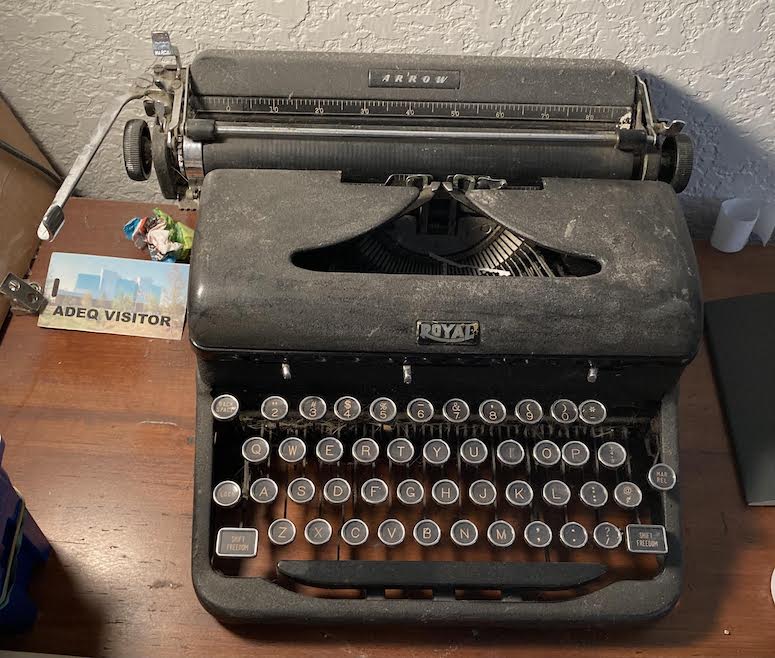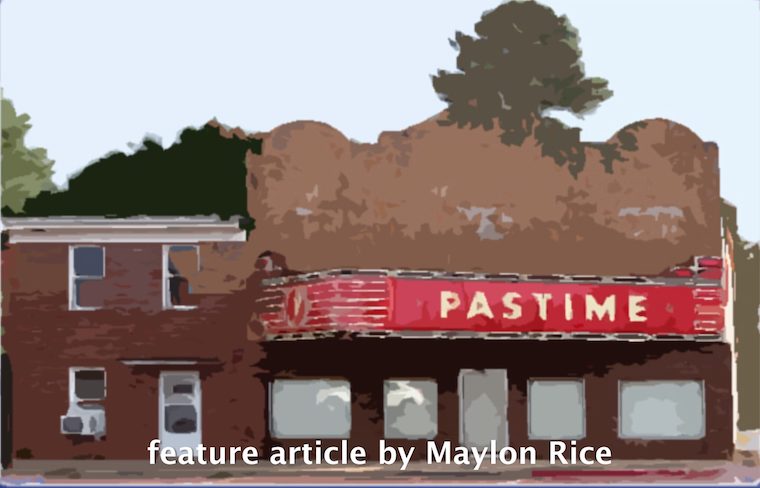If there was ever a life skill, I learned at Warren High that has served me well it was typewriting, or as I believe it was listed as Typewriter I/Office Machines back in the old school days.
The small two classrooms on the far west side of the old Warren High School complex on Pine Street, were where all the typewriting, Gregg shorthand, bookkeeping and others office machine skills were taught by Mrs. Avis Harrelson and Mrs. Mary Jane Murphy (and perhaps others both earlier and later on) but these were the two primaries of the early 1970s.
And everyone – I mean everyone – took typing.
Well, if you were on any career path, tomato farming or stacking lumber at the Bradley or Southern Mills – typing was in your future.
I believed it and jumped right in.
So did some other fumble-fingered friends of mine, both male and female who were short of speed, talent, and dexterity to really trot to the front of the class.

But oh, we all piled in the one classroom outfitted with an army of small royal typewriters, all with green plastic keys and green plastic front plates on the heavy metal typewriters.
Now some of my classmates, who wanted to be well trained in all the office skills of the day, took Typing I and Typing II, then some took bookkeeping, office machines management and a mysterious course called Gregg Shorthand.
For those unaware the Gregg Shorthand system was a quick writing system developed in 1888 of squiggles, curves, dashes and marks on the notebooks of a very efficient secretary. With this shorthand system the secretary would take “dictation,” recording verbally on paper as fast as the boss could talk the business information in a letter, memo or business directive.
Gregg Shorthand and I think there was even a class on Advanced Gregg Shorthand – was powerful stuff.
Only a few young ladies from my grade and the grades above us as junior and sophomores took this class.
And only a select few could draw the squiggles, lines and symbols when hearing them and later recite the letter in a typewritten letter, documents or even court records, fast as lighting.
Last weekend, January 8th, was National Typewriting Day – and since most of the typewriters in any home or garage are sitting idle or strung as trot line weights these days, few people noticed or observed this national holiday.
Me, an old mud turtle, slow to change and big on yesterday, still have three or four typewriters around the house and garage (where cars have not been parked inside for all the household junk and collectables of the last decade reside).
All these machines, I am sad to say, even covered with the old stiff plastic covers, are gathering dust. Only one has a typewriter ribbon, and I am sure it is dry and void of making those impressions of the typewriter keys on the paper.
Computers and keyboarding as it is now called is all the rage.
But I am told few public schools even offer keyboarding classes any more.
Cell Phones have ruined all that former dexterity of placing the left-hand fingers on ASDFG and the right hand over the HJKL; keys.
And learning to “bump” the space bar with the right or left thumb is really ancient.
And nobody recalled the most used keys on the typewriter on the left hand top row side of the letter keys were the QWERTY keys.
And hitting the shift key to make capital letters life the a to A and the b to B, are indeed ancient hieroglyphics to modern kids who type with their thumbs at blinding speed on a cell phone keypad that is nothing like the old typewriter key pads.
And does everyone remember we were taught to space twice – two times – after the period in a sentence.
First and foremost, there were no sets of numbers to the right of the keyboard as is on the standard keyboard of computers today. The numbers were on the top row of the keyboard. There was not a “No. 1” key – that was the “l” key. The number keys were 2,3,4,5,6,7,8,9 and 0. And just to add confusion the “dash” followed 0.
My most fear that came to be every day at 9 a.m. (when my typing class met) was not sprinting down the hallway to find and sit as one of the 15 or so machines out of the 30 in the classroom that had uncovered keys.
We were all supposed to be learning how to position our hands on the keyboard to find all the rest of the keys efficiently, quickly, and precisely.
That was and is still a challenge to me today to close my eyes and type and get and stay on the right keys.
But back at WHS if I didn’t get to one of the “regular” machines, my 45-minute class time was spent with that damn circular eraser with the plastic bristle brush scrubbing out the mistakes.
Mrs. Harrelson, who lived out near Rye, was one of the most well dressed, polite and nicest instructors. She knew my “hunting and pecking” on the typewriters at the Eagle Democrat, plus my very left-handedness had all but ruined my hopes of an “A” in Typing I.
And I was not cut out for Typing II when the field of students under some pick, clunky Underwood electric typewriters that made so much noise when in action that entire hallway sounded like woodpeckers on a dead pine snag in the Johnsville tract of Bradley County.
But I quietly celebrated this last Typewriter Day frantically hunting down a ribbon, turning my fingers an inky blue-black and then typing out half a letter to an old friend before the dreaded finger cramps cut in.
And that is a Pastime of the past and the present that makes me smile.


